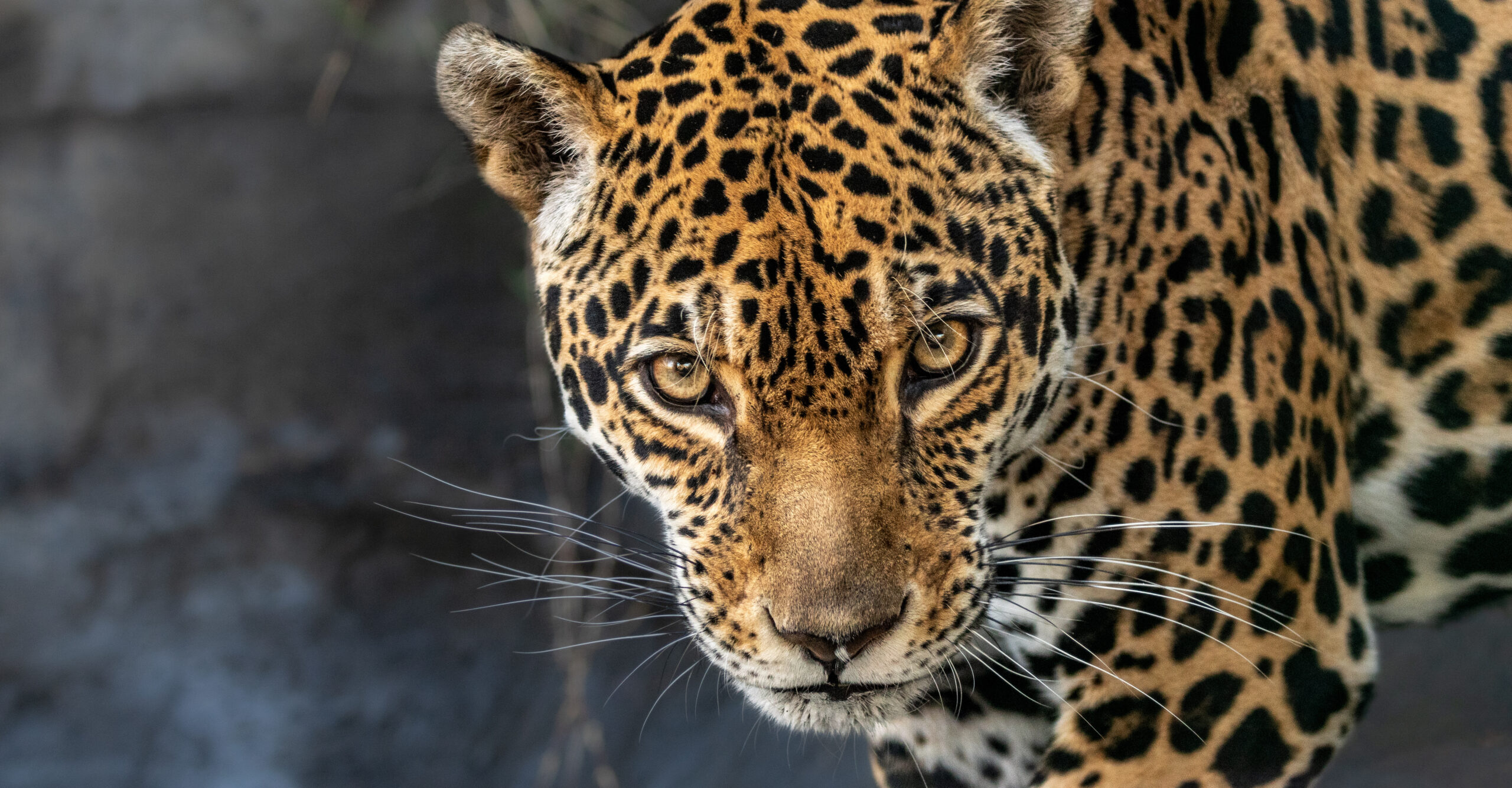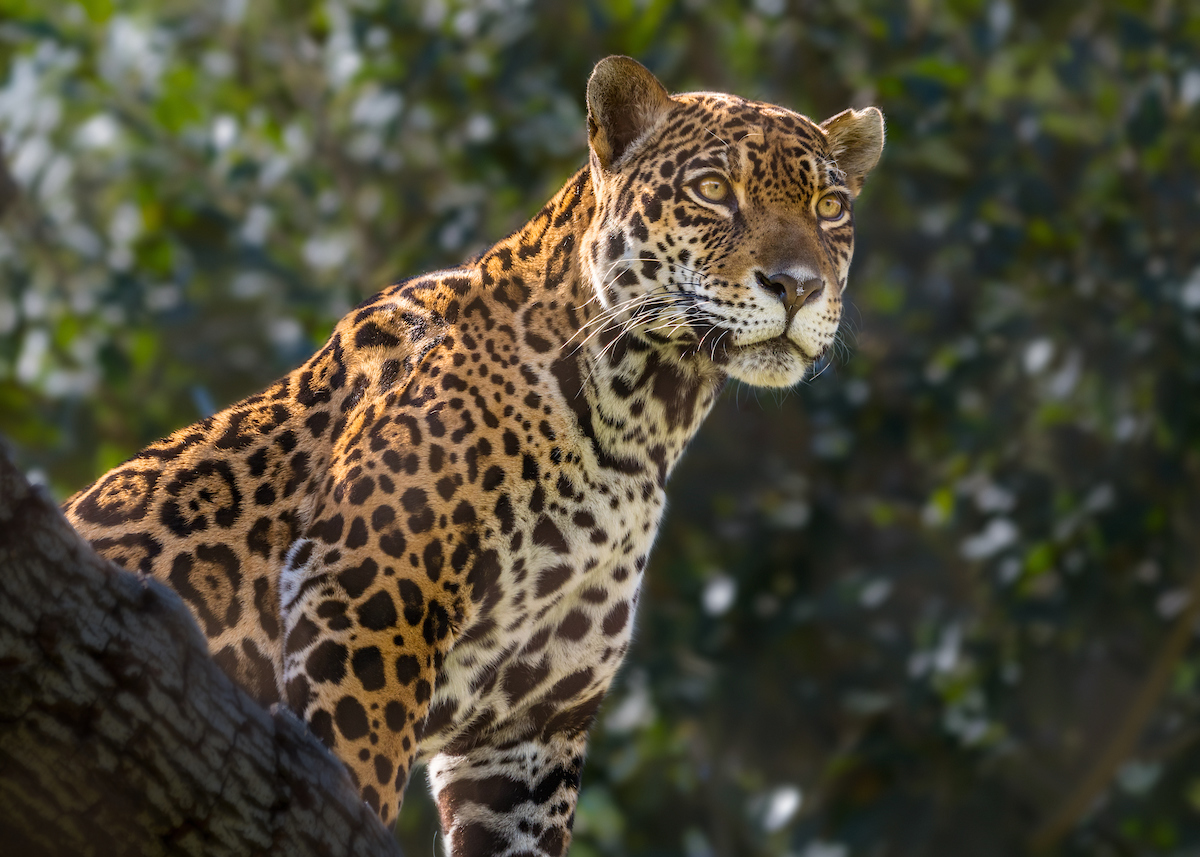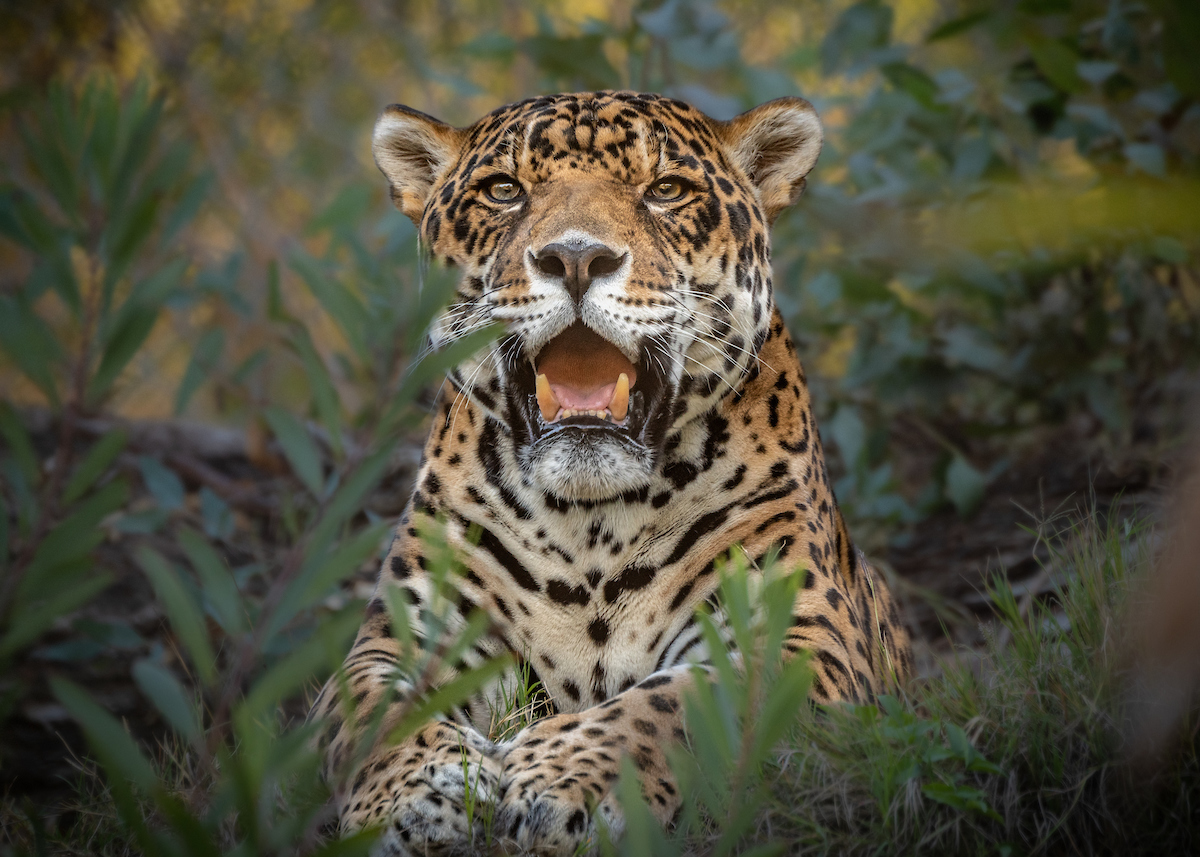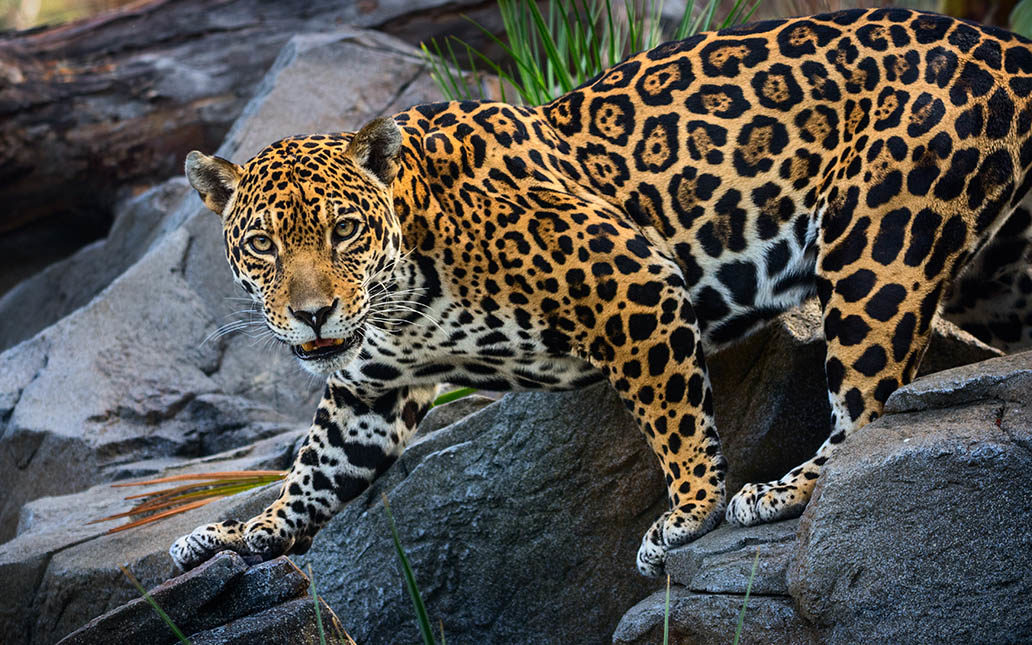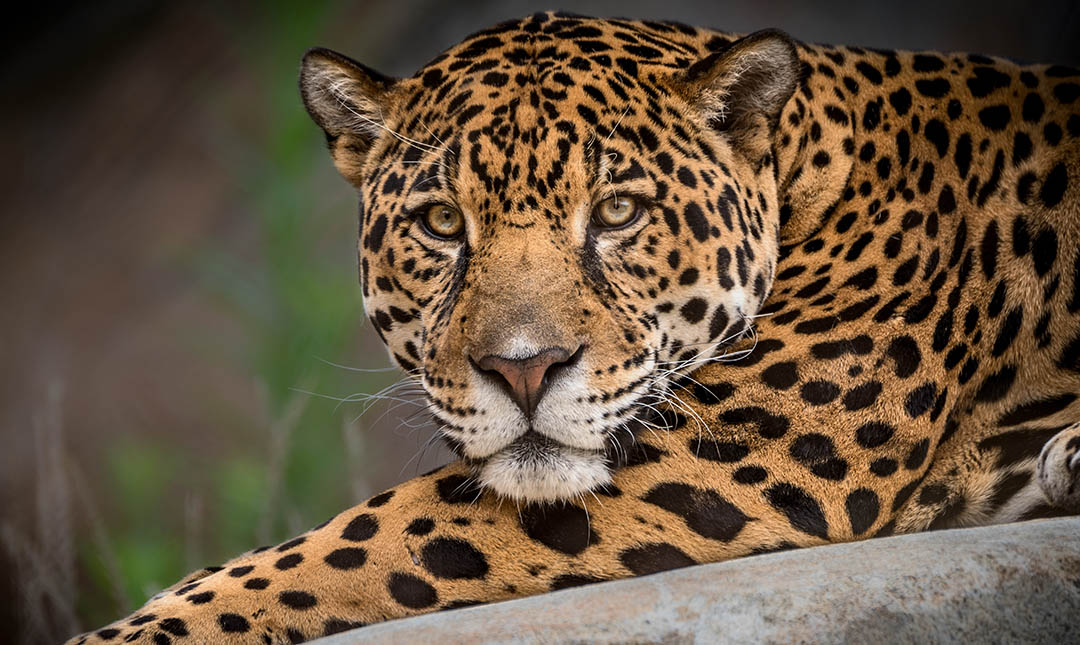About
The jaguar is the largest cat in the Americas and the world’s third largest after tigers and lions. Jaguars and leopards are similar in appearance. However, jaguars are found only in the Americas, while leopards inhabit Asia and Africa. Jaguar spots differ from leopard spots in that they form rosettes with one black spot in the middle. Spotted coats provide camouflage by breaking up the solid outline of an animal’s body, enabling it to blend in with the light and dark patches in the jungle. Jaguars often hunt in water, and they are excellent swimmers. Jaguars will dip their tails into the water to lure fish. Like most cats, they usually hunt at dusk and dawn. Generally solitary, they spend the daytime cooling in pools or rivers and often resting in trees. Since 1900, jaguars have disappeared from over 50 percent of their range, which once spanned from Argentina to Arizona and New Mexico. Jaguars in the U.S. are thought to have disappeared. Major threats include deforestation, mining, and cattle ranching, which reduce and fragment the jaguar’s habitat and food sources. Hunting of jaguars for pelts has declined but there is still a demand for jaguar body parts used for traditional medicine.


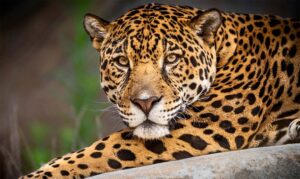
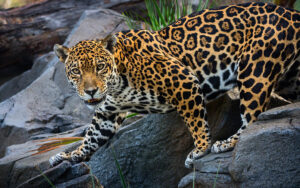


Status
The jaguar is “near threatened.” Since 1900, jaguars have disappeared from over 50% of their range due to persecution by livestock ranchers, degradation of habitat, and human hunting of the jaguar’s prey. In many countries, jaguars are protected, but enforcement is difficult and jaguar skins are still sold on the black market. Jaguars live about 23 years.
Habitat
The largest jaguar population inhabits Brazil’s Amazon rainforest. Jaguar habitat is limited in Mexico, Guatemala, and Argentina, and rare in other parts of Central and South America. Jaguars live near water in rainforests, swamps, grasslands, scrublands, and lowland semi-deciduous forests.
Diet
Among the 80 species of prey that these carnivores have been documented consuming are peccaries, capybaras, caimans, turtles, fish, monkeys, tapirs, deer, reptiles, birds, and domestic livestock.
Physical Characteristics
Jaguars are muscular and stocky with short limbs. They deliver a bite that is more powerful than other big cats and among the strongest in mammals, able to pierce turtle shells or a caiman’s skull. Body length is 5 to 6 feet. Shoulder height is 27 to 30 inches. Jaguars weigh between 125 and 250 pounds. Females are 10 to 20 percent smaller than males. Lifespan is 12–15 years in the wild and up to 25 years in human care.
LOCATION WITHIN THE ZOO
You’ll find this animal in the Rainforest of the Americas. See the Zoo Map.

